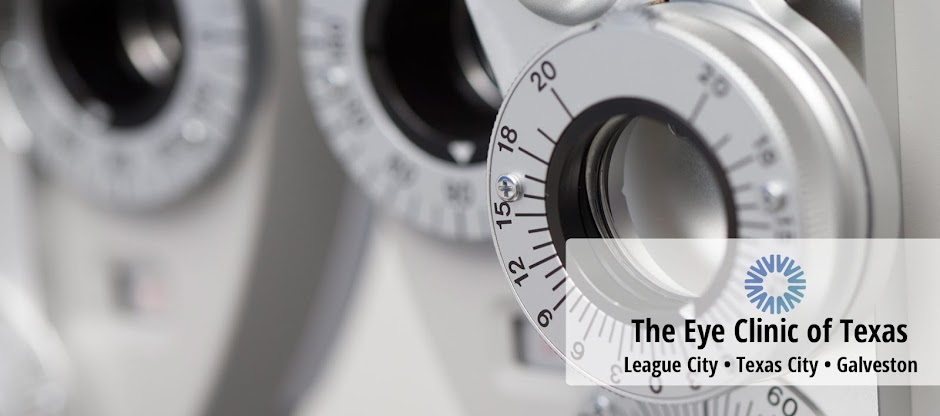Does Eye Patching Work for Kids with Lazy Eye?
If you or someone you know has a child with an eye turning problem or appears to have other eye health or vision problems, please do not wait. Schedule an eye exam at The Eye Clinic of Texas, an affiliate of Houston Eye Associates, at 800-423-3937, visit The Eye Clinic of Texas, or Facebook.
The Eye Clinic of Texas is an affiliate of Houston Eye Associates, the largest ophthalmology clinic in the nation. We are a leading eye care practice serving the greater Houston, League City area with offices at 1100 Gulf Freeway, Suite 114, League City, Texas 77573.
Bright Days with Cataract Surgery
“I had a great experience! I love Dr. Milstein and his staff. They always take such good care of me. My vision is so much brighter. I highly recommend Dr. Milstein to all my friends.” – Becky S.
If you or someone you know is experiencing cataract symptoms such as cloudy foggy vision, glare or difficult night driving and would like to learn more about cataract surgery & lens implants please call The Eye Clinic of Texas, an affiliate of Houston Eye Associates, at 800-423-3937, visit The Eye Clinic of Texas, or Facebook.
The Eye Clinic of Texas is an affiliate of Houston Eye Associates, the largest ophthalmology clinic in the nation. We are a leading eye care practice serving the greater Houston, League City and Texas City with offices at 1100 Gulf Freeway, Suite 114, League City, Texas 77573.
What is a Stye?
A stye-also called a Hordeolum-is a red, sore lump near the edge of the eyelid that grows from the base of your eyelash or under the eyelid. Most styes are caused by a bacterial infection. There are two kinds of styes:
·
External Hordeolum: A stye that begins at the base of your
eyelash often from an infection in the hair follicle that looks like a pimple.
·
Internal Hordeolum: A stye inside your eyelid that is caused by
an infection in an oil-producing gland in your eyelid.
There are a number of ways your doctor can treat a stye including warm compresses, antibiotics or in office surgery if the other treatments aren’t helping. Never squeeze a stye!
If you or someone you know has a stye please schedule an appointment at The Eye Clinic of Texas, an affiliate of Houston Eye Associates, at 800-423-3937, visit The Eye Clinic of Texas, or Facebook.
The Eye Clinic of Texas is an affiliate of Houston Eye Associates, the largest ophthalmology clinic in the nation. We are a leading eye care practice serving the greater Houston, League City and Texas City with offices at 1100 Gulf Freeway, Suite 114, League City, Texas 77573.
Eye Drops for Droopy Eyelids
Did you know that there is a prescription eye drop to help droopy eyelids? It is estimated that 10-12% of adults have a droopy eyelid, but m...

-
Diabetic retinopathy (DR) is one of the leading causes of preventable blindness globally. Yet, many diabetic patients still do not schedul...
-
What do droopy, saggy eyelids and eyelid surgery have to do with headaches? While you might think that eyelid surgery or blepharoplasty is...
-
Is Your Doctor Prescribing the Wrong Treatment for Pink Eye? Based on our own experiences as well as recommendations of the American Aca...
-
“I was referred by two co-workers/friends that had LASIK done here and boy was I glad I took them up on the referral. I scheduled my consu...
-
“I had been in glasses/contacts for 20 years! I was ready to get this LASIK procedure! It was a very easy procedure. Dr. Milstein was very...
-
Retinal Artery Blockage May Warn of Impending Stroke A certain retinal vessel disease may be a warning of an impending stroke! When an a...
-
We perform cataract surgery and lens implantation for more and more patients each year as cataracts continue to be a leading cause of decr...
-
Mary B tells us about her cataract surgery. “I was having trouble driving because I had developed cataracts. It had reached the poi...
-
“Dr. Van is an absolute miracle worker! I could not fathom that because my vision was so terrible and had always been that way that havi...
-
Pregnancy, Labor & Eye Pressure: What You Need to Know! What could pregnancy, labor and your eye pressure have to do with one anothe...

